Docx files for personal book: Verbum 9 part 1; Verbum 9 part 2; Verbum 9 part 3; Verbum 9 part 4; Verbum 9 part 5; Verbum 9 part 6; Verbum 9 part 7; How to use the Verbum Lectionary and Missal; Verbum 8 tips 1-30; Verbum 8 tips 31-49
Reading lists: Catholic Bible Interpretation
Please be generous with your additional details, corrections, suggestions, and other feedback. This is being built in a .docx file for a PBB which will be shared periodically.
Previous post: Tip 9af Next post: Tip 9ah
Interesting Words
An illustration from the First Sunday of Advent, Year A in United States Conference of Catholic Bishops. Lectionary for Mass: For Use in the Dioceses of the United States of America. Second Typical Edition. Vol. I–IV. United States Conference of Catholic Bishops, 1998–2002.
First reading
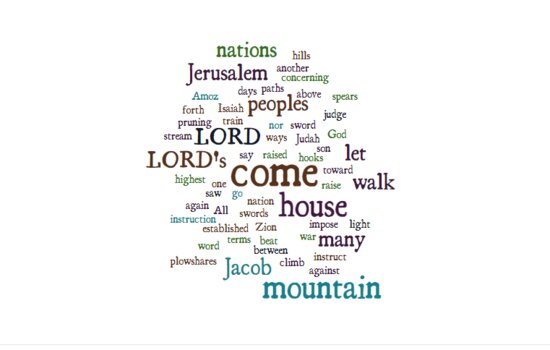
Responsorial psalm
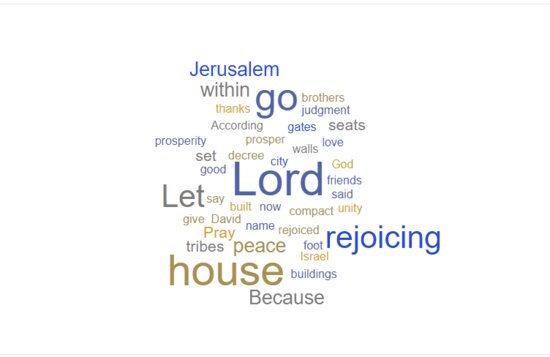
Second reading
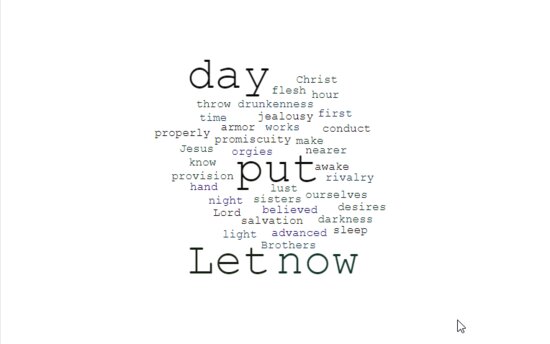
Gospel
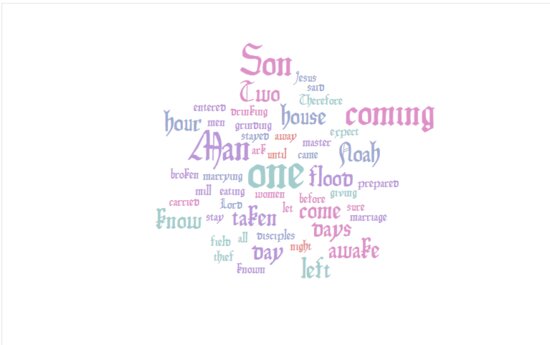
Effect of all readings
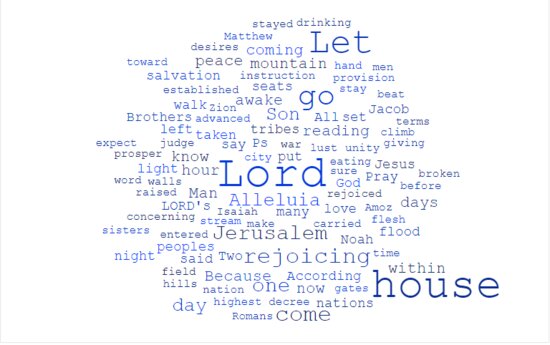
What do these tell you? They tell you what the congregation heard when the readings were proclaimed – what was repeated often and is sure to remain in their minds; what was heard rarely and is dependent upon the lector’s proclamation to be memorable. [Yes, I did not use Verbum to create these as I needed to be able to use multiple, non-consecutive texts. Furthermore, I wanted the lectionary text rather than the Bible text.]
From Verbum Help:[quote]
Interesting Words Section
This section takes the words in the guide’s key passage and compares their frequency with those of the same words in the surrounding sections. The results are computed at run time, and are not pulling from a curated list. As such, the results may not line up with a notion of "importance" within the passage. Rather, this section alerts you to the relative statistical frequency of certain words compared to the surrounding text, that is, how much they "stand out" from their surroundings.
Extracted words are presented as a "word cloud," where the sizes of the words corresponds to the relative statistical frequency of the word: the larger the word appears, the less frequently it appears and the more it stands out. Click a word in the cloud to list its occurrences within the key passage.
The statistical analysis can be performed against the translation language (for example, English) or against the original language of the passage (for example, Greek or Hebrew). When a language with a built-in stemming algorithm is chosen (for example, English), words are stemmed before they are collated, so that words like "run" and "runner" are counted as the same word. When run against an original language, surface forms are used.[1]
Prerequisite reading: Tag cloud - Wikipedia
Resources included: Bibles
Section heading bar
There are no settings but the Section heading bar menu does include the option to save as a Passage List.
Contents
This guide provides a choice between English, Greek, or Hebrew using the appropriate highest priority Bible. It opens with just the word cloud (wordle) but clicking on a word exposes additional detail information.
In English (or other modern language)
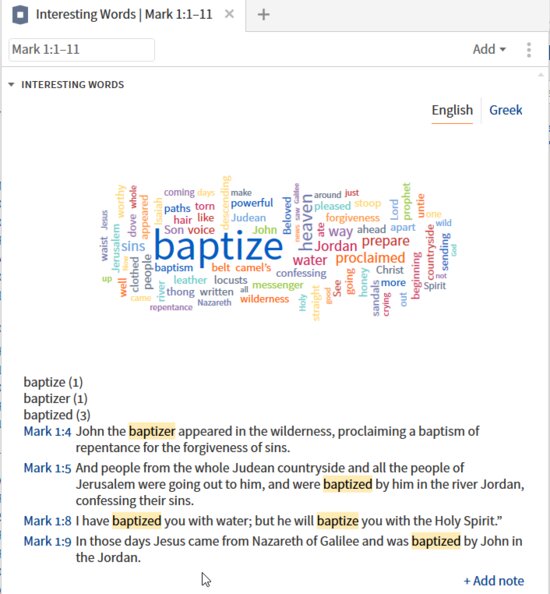
In Greek (or other original language)
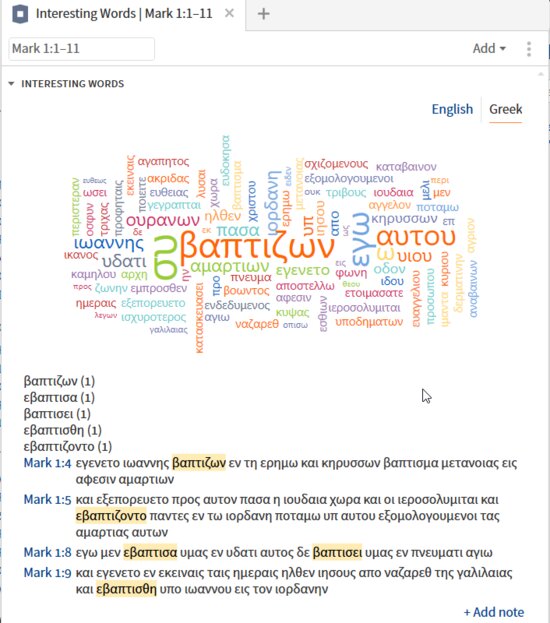
The content includes:
- A word cloud/wordle in which the size of the font reflects the frequency of its use. Note that both examples shown are for languages that are stemmed to allow different forms of the word to be grouped together.
- For a word selected from the word cloud/wordle
- Form of the word with number of occurrences
- Bible reference
- Bible reference text with the relevant word highlighted in orange
Interactions on data
|
Visual cue
|
Data element
|
Action
|
Response
|
|
|
Word within word cloud
|
click
|
Opens a detail display under the word cloud contain word form with counts, Bible references and highlighted text.
|
|
Right-click
|
Opens the short-form Context Menu
|
|
Blue text
|
Language option
|
Click
|
Toggle between languages with active language having an orange underline.
|
|
Bible reference
|
Mouse over
|
Opens a standard popup preview text of the Bible reference in the user’s preferred Bible.
|
|
Click
|
Opens the user’s preferred Bible to the given Bible verse.
|
|
Right click
|
Opens a Context Menu
|
|
Drag and drop
|
Opens the user’s preferred Bible to the given Bible verse in a location of the user’s choice.
|
|
Orange text
|
Occurrence of lemma in Bible text
|
Mouse over
|
Opens a preview of the Bible text beginning at the selected lemma.
|
|
Click
|
Opens the Bible to the reference with the text beginning at the selected lemma.
|
|
Right click
|
Open Context Menu
|
|
Drag and drop
|
Opens the Bible to the reference with the text beginning at the selected lemma at a location of the user’s choice.
|
Search
A search on a particular lemma should replicate the Bible reference and highlighting portion of the results. However, there is no search that covers the entire passage as the Interesting words guide does. The Concordance tool, however, is a more appropriate fit.
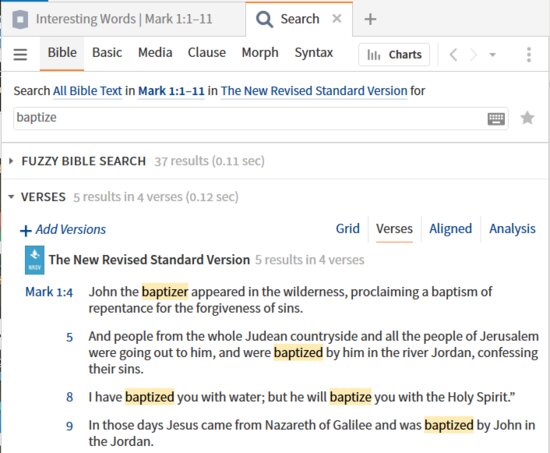
Supplemental materials
The Concordance tool can be used to show the data used to generate the word cloud.
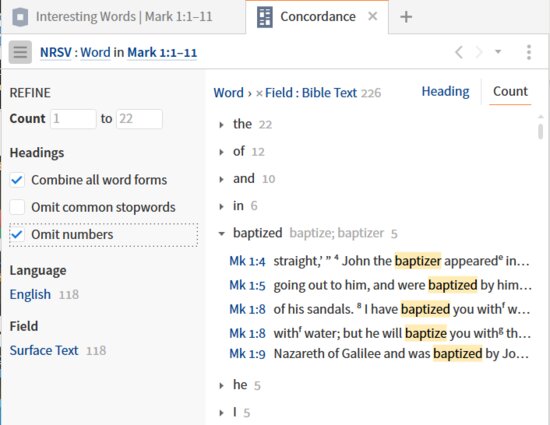
[1] Verbum Help (Bellingham, WA: Faithlife, 2018).